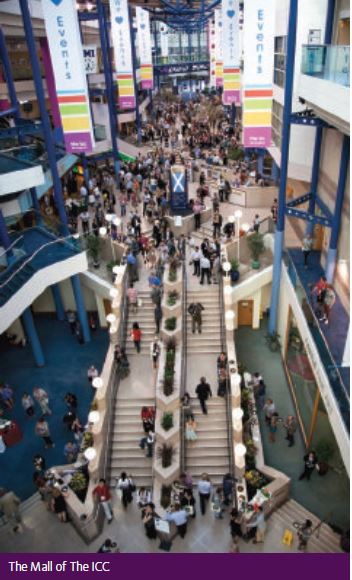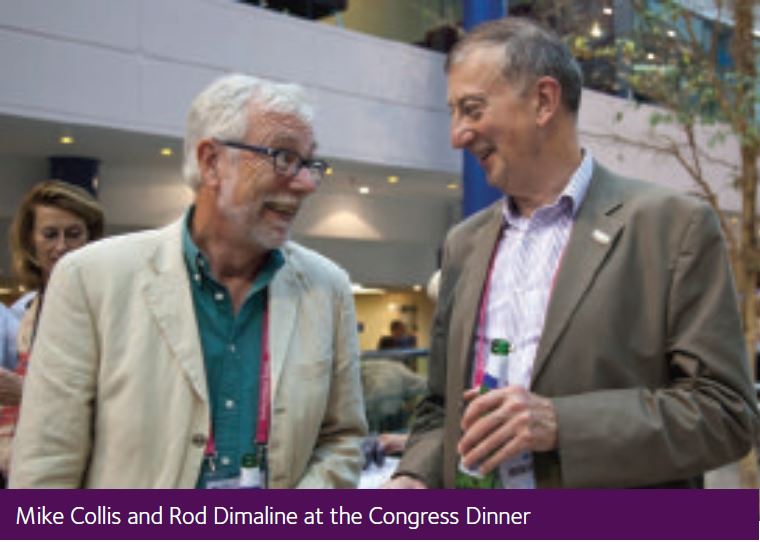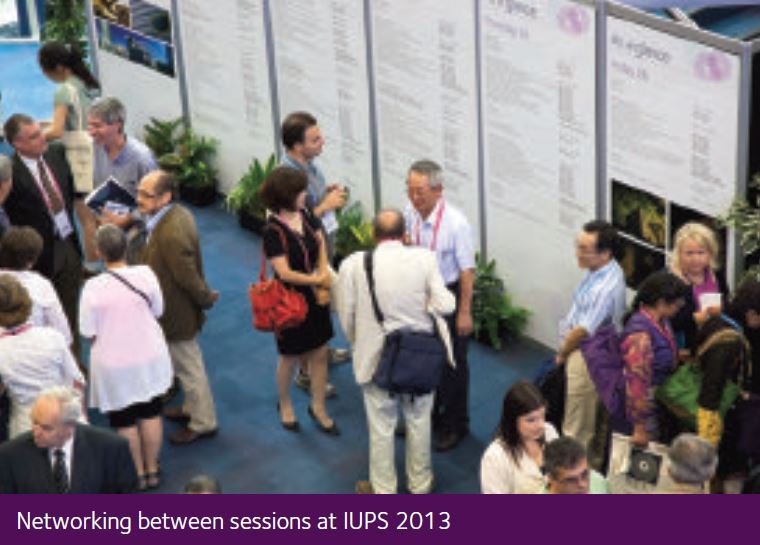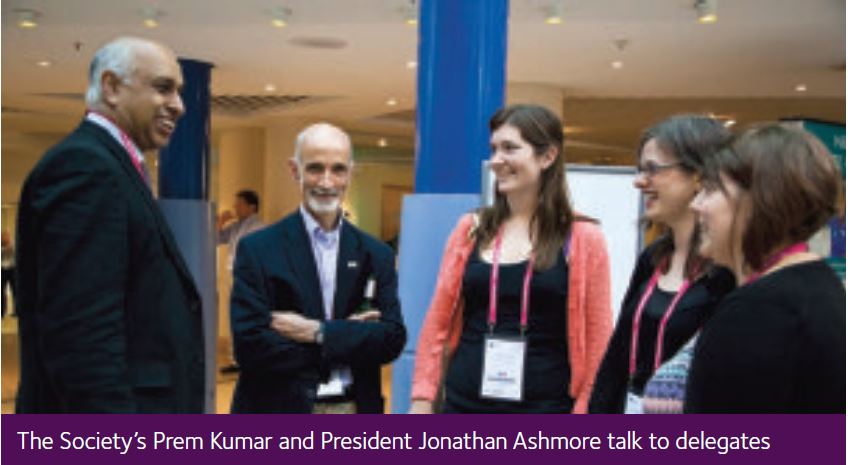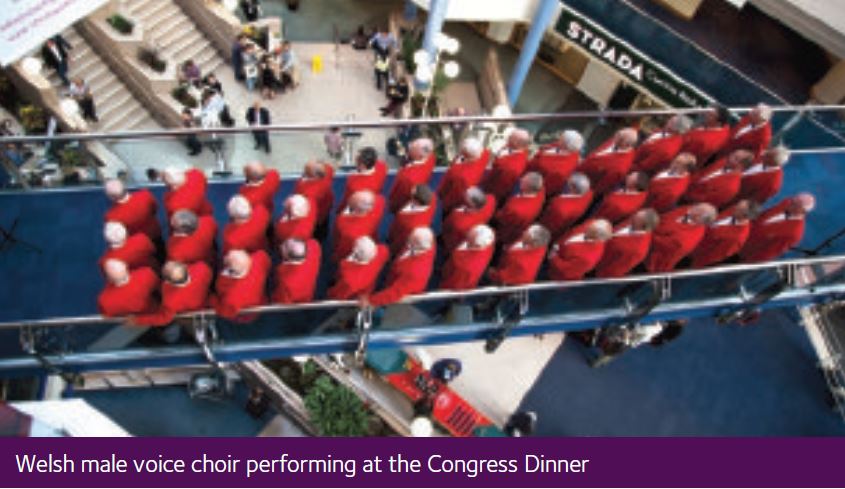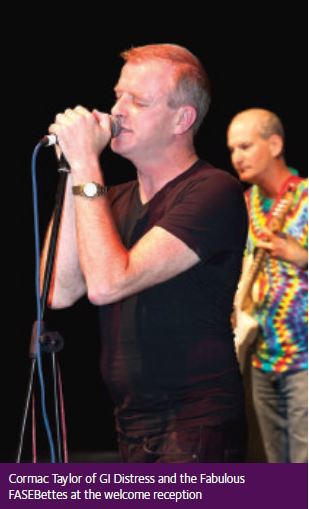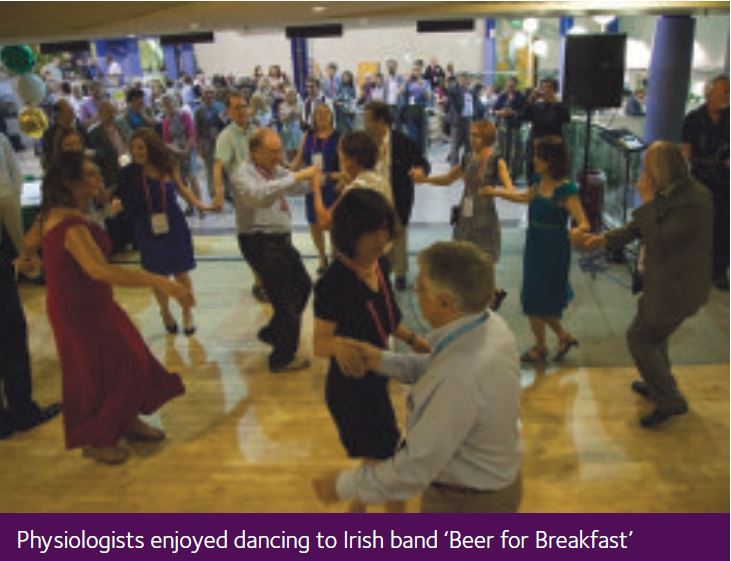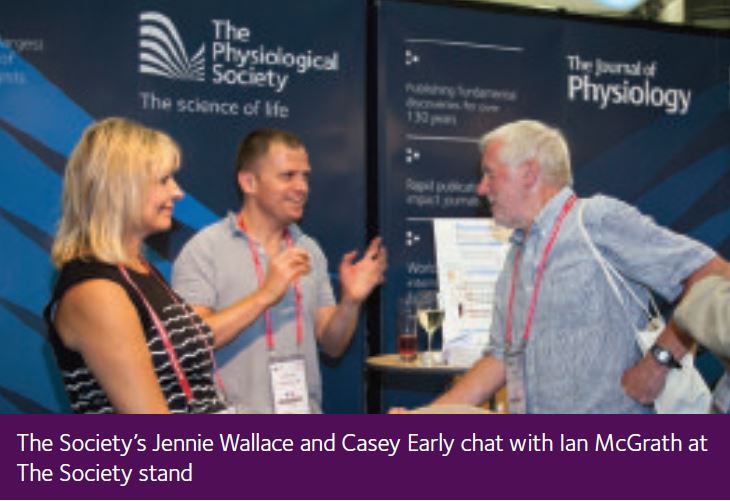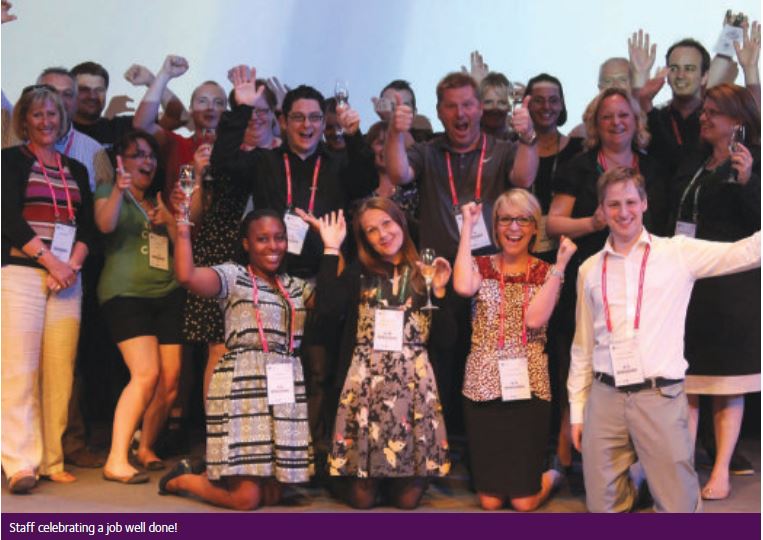
Physiology News Magazine
The road to IUPS
Events
The road to IUPS
Events
David Eisner
University of Manchester, UK
Bridget Lumb
University of Bristol, UK
https://doi.org/10.36866/pn.92.15
21-26 July 2013, International Convention Centre, Birmingham, UK

In 2004 IUPS put out a call for bids to hold the 2013 Congress. At that time we were both on The Physiological Society’s Executive Committee as Meetings Secretary (BL) and International Secretary (DE). The Society had just changed the way its own meetings were organized, moving from seven or eight meetings per year to one larger Annual Meeting. It had also reorganized its administration with a professional office staff. In an optimistic moment we therefore thought that if we could organize an Annual Meeting of 1000 attendees, could it really be much more difficult to scale up to IUPS?
The then Executive Committee was enthusiastic. DE and the then President (Alan North) presented our bid at the 2005 meeting in San Diego. Compared to the many glitzy presentations we have seen since, with superior graphics and videos, it was rather austere and amateurish, but it obviously did the job. Having won the bid there then ensued a feeling of “be careful what you wish for, as you may get it”. We alternated between being, on the one hand, terrified by the magnitude of the organizational task and, on the other, feeling that 2013 was in the infinite future and could be ignored in favour of more immediate matters.
The subsequent smooth running of the preparations for the meeting was due to two groups of people. Firstly, the Executive of The Physiological Society. In point of fact there were several changes in the composition of the Executive as various officers reached the end of their tenures and were replaced by others. What they all had in common was the desire to support the IUPS adventure but leave us and the IUPS2013 Organizing Committee free to design the congress. In hindsight, one of the most important decisions was made at the time of the original bid: the Organizing Committee was set up to contain two groups of members. One was unchanged throughout and contained those (including us) who were involved in the original bid and the other rotated and was made up of the President, Vice-President, Meetings Secretary and Treasurer of The Society. This led to almost seamless organization and made sure that the Congress organization was always well-integrated with The Society. The other group, without which the meeting would have been much less successful, comprised the highly enthusiastic and dynamic Society Events Team led by Nick Boross-Toby. Nick did a wonderful job and, on a good day, even listened to us!
The first task was to fix the venue. We toured various congress centres and finally settled on the ICC in Birmingham. One of the main advantages of the ICC is that it is very centrally located, close to the canalside restaurants, bars and cafes. There is also ample hotel accommodation nearby. The choice of Birmingham was vindicated by the number of IUPS attendees we saw sitting outside enjoying informal interactions.
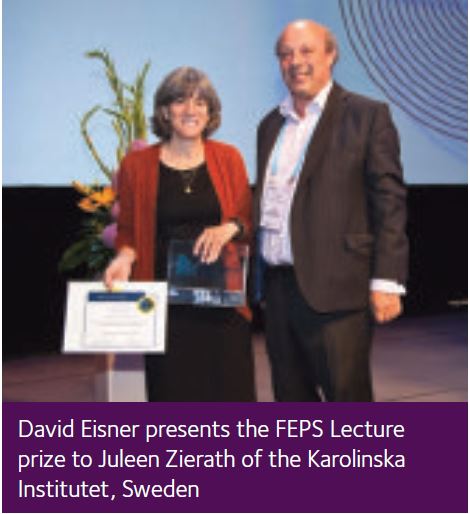
From the very beginning, we had hoped to involve other European Societies in the organization of IUPS 2013. The Federation of European Physiological Societies and the Scandinavian Physiological Society both made IUPS 2013 their annual meeting. Unfortunately our attempts to encourage the German Physiological Society (the other large, European, national society) to hold their annual meeting at IUPS did not succeed. A brighter outlook materialized, however, when Ulirch Pohl approached us with the suggestion that two vascular societies (the European Society for Microcirculation and the European Vascular Biology Association) were due to meet in 2013 and how would we feel about them meeting at IUPS? That was a ‘no brainer’ and a stimulating scientific collaboration was born providing a real strength in the final programme.
The next task was to select the science to fill the meeting with. This was done by an International Scientific Programme Committee (ISPC), chaired by DE with Walter Boron (IUPS Secretary General) as co-Chair. The Committee itself was made up of representatives from the IUPS Council as well as those selected from The Physiological Society and elsewhere in Europe. We first selected 33 keynote and plenary lecturers. Particular effort was made to ensure that these speakers were reasonably well-balanced for both their geographical origins and their gender. In the end, 10 out of 33 keynote speakers were female, a fraction which compares very favourably with most other meetings. Gender related issues had a major airing in the eventual IUPS meeting with three lunchtime sessions (organized by Susan Wray) dealing with various career stages.
We put out a call to the international physiology community for suggestions for symposia to fill the 100 or so available slots and were gratified to receive 350 proposals. This enthusiastic response made a lot of work for the ISPC. Although some of the initial work was done by email, the bulk was done at a two day meeting in Birmingham in early March 2012. The IPSC members worked hard to select and, in most cases, combine symposia. The final symposia had 294 male and 204 female speakers. Credit for the efficient development of the programme must go to Anne King, David Thwaites, Andrew Trafford and Susan Wray who each took responsibility for part of the programme. This involved much negotiation with symposium organizers and, in some cases, finding replacement speakers.
It almost seemed unreal when we arrived in Birmingham on Saturday 20 July. For so long the IUPS meeting was a very distant thought. It is up to others to judge the success of the meeting. All we can say is that we thoroughly enjoyed it. It was very stimulating to be able to listen to some extraordinarily good keynote and plenary lectures as well as symposia, and to meet old friends and make new ones.
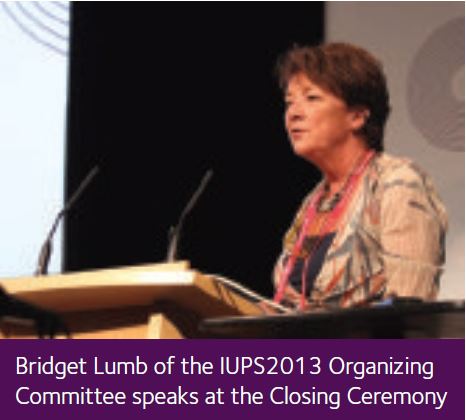
We would like to end with a reflection on the future of IUPS meetings. The local and international committees for IUPS2013 assembled a motivated and committed team that ensured a highly successful meeting which brought together a worldwide community of physiologists. Increasingly, international scientific meetings specialise and focus on particular aspects of our science. What sets IUPS meetings apart is that they bring together many different disciplines and allow cross fertilisation of thought and interest. Working with our Brazilian colleagues we are confident that IUPS2017 in Rio de Janeiro will build on our experience and produce an even better platform for the dissemination of physiological science.
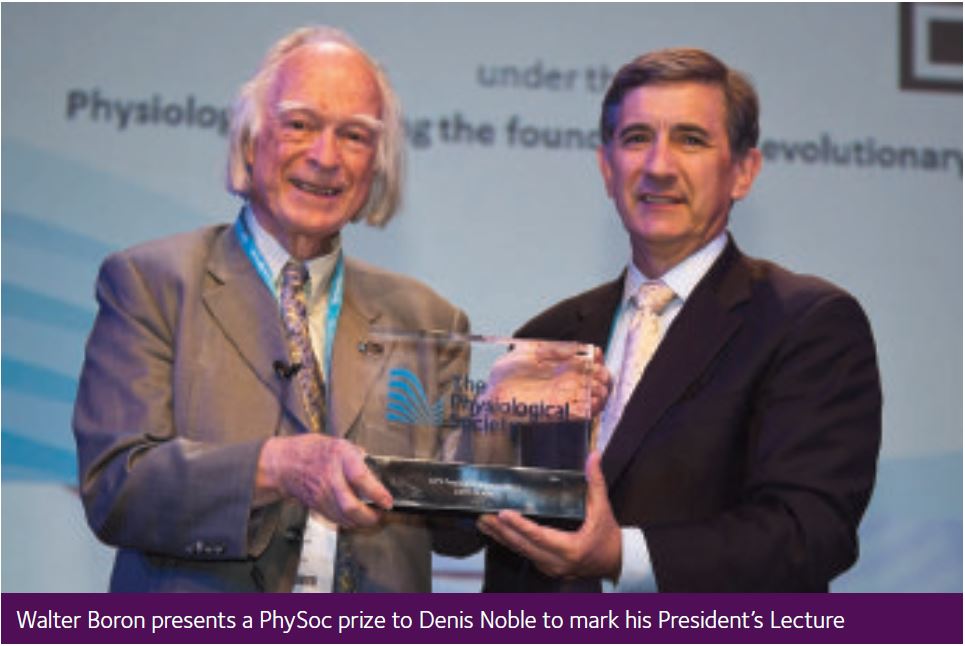
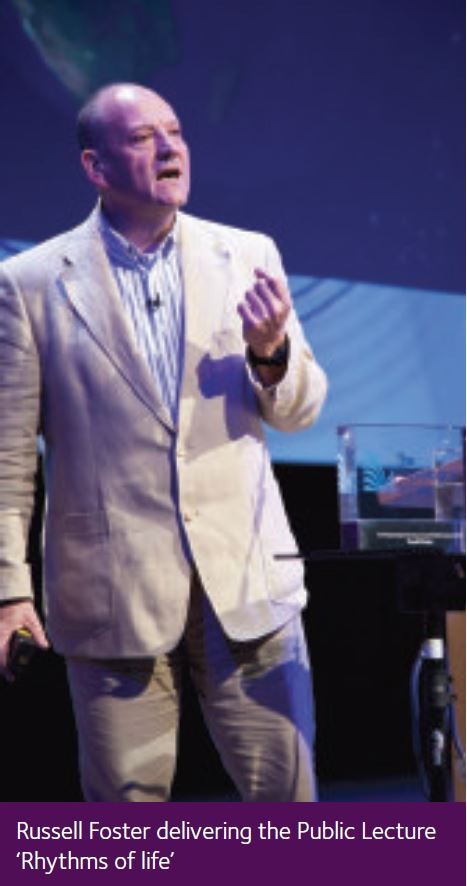
IUPS 2013 photo special
